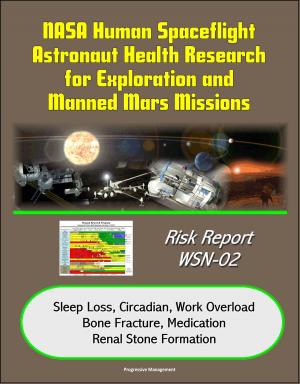To See the Unseen: A History of Planetary Radar Astronomy - A Comprehensive History of Radar Observations of Venus, Mars, Comets, Asteroids, the Magellan Mission, Arecibo Observatory (NASA SP-4218)
Nonfiction, Science & Nature, Science, Physics, Astronomy, Astrophysics & Space Science| Author: | Progressive Management | ISBN: | 9781465778420 |
| Publisher: | Progressive Management | Publication: | January 18, 2012 |
| Imprint: | Smashwords Edition | Language: | English |
| Author: | Progressive Management |
| ISBN: | 9781465778420 |
| Publisher: | Progressive Management |
| Publication: | January 18, 2012 |
| Imprint: | Smashwords Edition |
| Language: | English |
This official NASA history document - converted for accurate flowing-text e-book format reproduction - provides a comprehensive scientific and management history of planetary radar astronomy, with the story of radar observations from Earth of Mars, Venus, comets, and asteroids, as well as the successful mission of Magellan to map Venus.
The past 50 years have brought forward a unique capability to conduct research and expand scientific knowledge of the Solar System through the use of radar to conduct planetary astronomy. This technology involves the aiming of a carefully controlled radio signal at a planet (or some other Solar System target, such as a planetary satellite, asteroid, or a ring system), detecting its echo, and analyzing the information that the echo carries.
This capability has contributed to the scientific knowledge of the Solar System in two fundamental ways. Most directly, planetary radars can produce images of target surfaces otherwise hidden from sight and can furnish other kinds of information about target surface features. Radar also can provide highly accurate measurements of a target's rotational and orbital motions. Such measurements are obviously invaluable for the navigation of Solar System exploratory spacecraft, a principal activity of NASA since its inception in 1958.
Andrew J. Butrica has written a comprehensive and illuminating history of this little-understood but surprisingly significant scientific discipline. Quite rigorous and systematic in its methodology, To See the Unseen explores the development of the radar astronomy specialty in the larger community of scientists.
More than just a discussion of the development of this field, however, Butrica uses planetary radar astronomy as a vehicle for understanding larger issues relative to the planning and execution of "big science" by the Federal government. His application of the "social construction of science" and Kuhnian paradigms to planetary radar astronomy is a most welcome and sophisticated means of making sense of the field's historical development.
This official NASA history document - converted for accurate flowing-text e-book format reproduction - provides a comprehensive scientific and management history of planetary radar astronomy, with the story of radar observations from Earth of Mars, Venus, comets, and asteroids, as well as the successful mission of Magellan to map Venus.
The past 50 years have brought forward a unique capability to conduct research and expand scientific knowledge of the Solar System through the use of radar to conduct planetary astronomy. This technology involves the aiming of a carefully controlled radio signal at a planet (or some other Solar System target, such as a planetary satellite, asteroid, or a ring system), detecting its echo, and analyzing the information that the echo carries.
This capability has contributed to the scientific knowledge of the Solar System in two fundamental ways. Most directly, planetary radars can produce images of target surfaces otherwise hidden from sight and can furnish other kinds of information about target surface features. Radar also can provide highly accurate measurements of a target's rotational and orbital motions. Such measurements are obviously invaluable for the navigation of Solar System exploratory spacecraft, a principal activity of NASA since its inception in 1958.
Andrew J. Butrica has written a comprehensive and illuminating history of this little-understood but surprisingly significant scientific discipline. Quite rigorous and systematic in its methodology, To See the Unseen explores the development of the radar astronomy specialty in the larger community of scientists.
More than just a discussion of the development of this field, however, Butrica uses planetary radar astronomy as a vehicle for understanding larger issues relative to the planning and execution of "big science" by the Federal government. His application of the "social construction of science" and Kuhnian paradigms to planetary radar astronomy is a most welcome and sophisticated means of making sense of the field's historical development.















